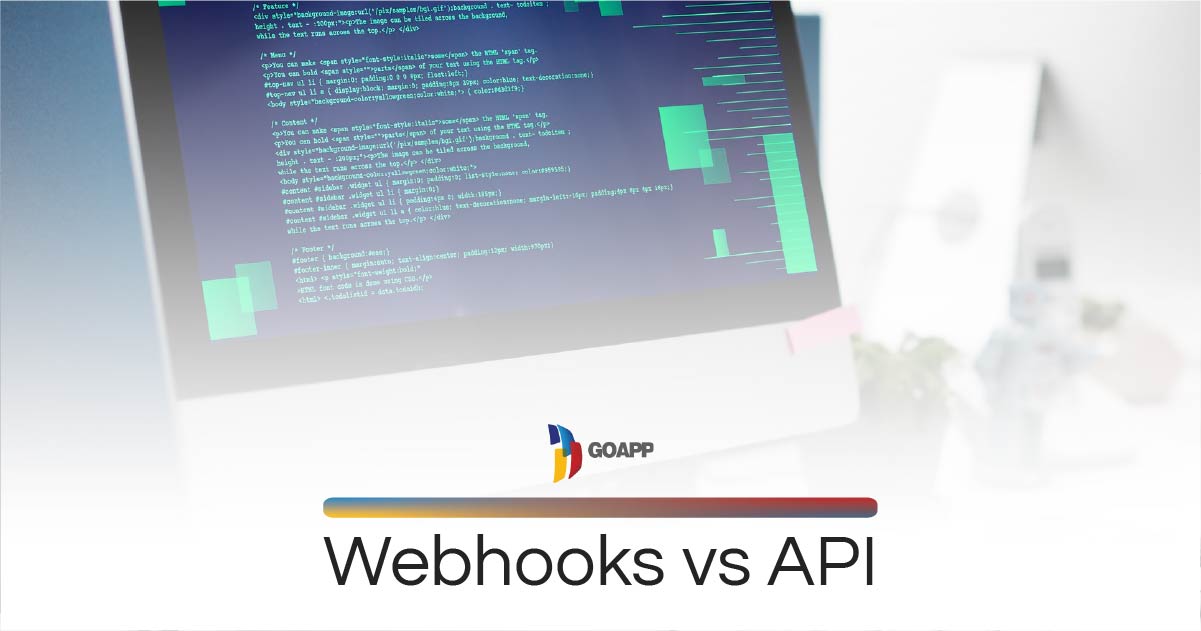

Webhook VS API: What is the Difference?
Webhooks and APIs are both used to enable communication between different applications or services, but they have slightly different purposes and functionality. Is it better to use Webhooks or APIs? What differences should you base your choice on?
Deciding between Webhooks and APIs depends on the specific needs of your application or service. In short, if your application needs to communicate with other applications bi-directionally, the API is probably the best choice. Instead, if the application needs to be automatically notified when an event occurs, Webhooks may be the best solution. In general, Webhooks are useful when you want to send data in real-time, while APIs are more suitable when you want to make requests to get information or perform specific actions.
What are APIs? What are the pros and cons of using them?
APIs (Application Programming Interfaces) are a set of tools and protocols that allow programmers to access the functionality of an application or service. APIs allow applications to communicate with each other and exchange data in a controlled and secure way and require the program to use them to make an explicit request to obtain information or perform an action. There are several pros and cons when using APIs to enable communication between different applications or services.
Advantages of using APIs:
- Access to features: APIs allow you to access the features of an application or service in a controlled and secure way. This means that you can use an application’s features without having to replicate all of the source code;
- Automation: APIs allow you to automate work processes, eliminating the need to perform repetitive tasks manually. For example, you can use an API to automatically retrieve data from an application and use it to generate reports or update databases;
- Integration: APIs allow you to integrate different applications or services, allowing them to exchange data and functionality. This means that customized solutions can be created to meet an organization’s specific needs;
- Updates: By using an API to access the features of an application, you can easily update the features without having to modify the application itself. This means that functionality can be enhanced without having to modify the entire application.
Disadvantages of using APIs:
- Complexity: APIs can be complex to implement and use. They require advanced technical knowledge and can be time-consuming and resource intensive to implement correctly;
- Security: Because APIs provide access to an application’s functionality, they can be an entry point for hackers and must be properly protected to avoid security breaches;
- Stability: APIs may be subject to changes and updates, which could cause compatibility issues with applications using them. It’s important to constantly monitor the APIs to make sure they work correctly and are compatible with the applications that use them;
- Dependency: Using an API to access the functionality of an application means that you are dependent on the API itself. If the API were to fail or become unavailable, the application using it could stop working properly.
What are Webhooks? What are the pros and cons of using them?
Webhooks, on the other hand, are an event-driven technology that allows one application to send information to another application automatically and in real time. Basically, instead of requesting information when needed, the application receives information automatically when a specific event occurs.
There are several pros and cons to consider when using Webhooks to enable communication between different applications or services.
Advantages of using Webhooks:
- Automation: Webhooks allow you to automate work processes, eliminating the need to perform repetitive tasks manually. For example, an e-commerce website could send a webhook to an inventory management application each time a product is purchased so that the inventory is automatically updated;
- Real-Time Updates: Webhooks allow you to receive real-time information, so you can react to changes immediately. For example, a traffic-monitoring application could send a webhook whenever an incident is reported to immediately alert users to the situation;
- Efficiency: Webhooks can improve system efficiency by reducing the number of requests that need to be sent and received. This means that applications can work more efficiently and faster;
- Scalability: Webhooks can be easily scaled to handle large amounts of data and concurrent connections. This means that applications can handle large volumes of data without slowdowns or interruptions.
Disadvantages of using Webhooks:
- Complexity: Webhooks can be complex to implement and use. They require advanced technical knowledge and can be time-consuming and resource intensive to implement correctly;
- Security: Because Webhooks allow one application to send information to another application automatically and in real-time, they can provide an entry point for hackers. Webhooks must be properly protected to avoid security breaches;
- Dependency: Using Webhooks means you are dependent on the application sending them. If the application fails or becomes unavailable, the application receiving Webhooks may stop working properly;
- Reliability: Since Webhooks rely on your network connection and the availability of the application sending them, there may be reliability issues. For example, if the network connection is interrupted or the application sending Webhooks goes offline, the Webhooks may not be received correctly.
